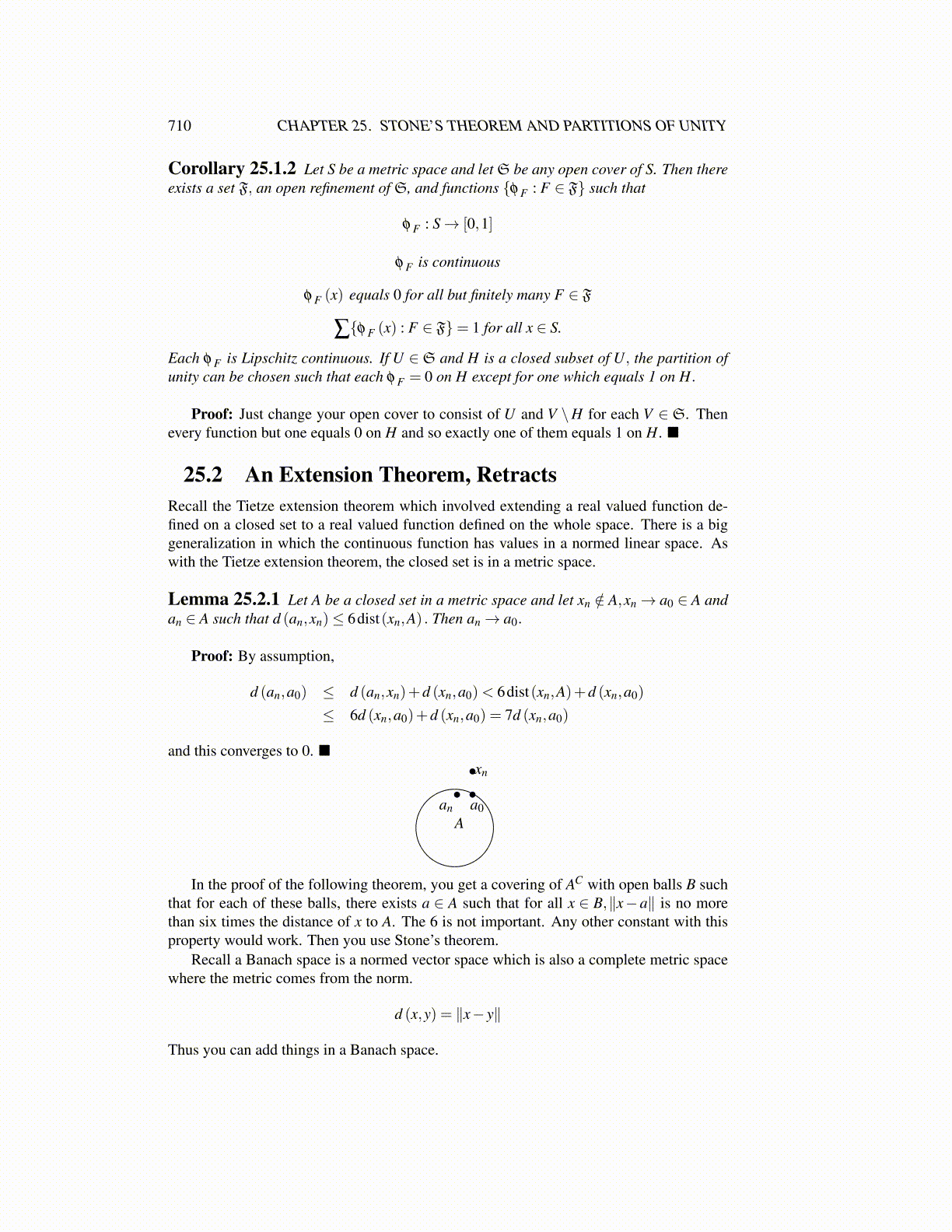
710 CHAPTER 25. STONE’S THEOREM AND PARTITIONS OF UNITY
Corollary 25.1.2 Let S be a metric space and let S be any open cover of S. Then thereexists a set F, an open refinement of S, and functions {φ F : F ∈ F} such that
φ F : S→ [0,1]
φ F is continuous
φ F (x) equals 0 for all but finitely many F ∈ F
∑{φ F (x) : F ∈ F}= 1 for all x ∈ S.
Each φ F is Lipschitz continuous. If U ∈S and H is a closed subset of U, the partition ofunity can be chosen such that each φ F = 0 on H except for one which equals 1 on H.
Proof: Just change your open cover to consist of U and V \H for each V ∈S. Thenevery function but one equals 0 on H and so exactly one of them equals 1 on H. ■
25.2 An Extension Theorem, RetractsRecall the Tietze extension theorem which involved extending a real valued function de-fined on a closed set to a real valued function defined on the whole space. There is a biggeneralization in which the continuous function has values in a normed linear space. Aswith the Tietze extension theorem, the closed set is in a metric space.
Lemma 25.2.1 Let A be a closed set in a metric space and let xn /∈ A,xn→ a0 ∈ A andan ∈ A such that d (an,xn)≤ 6dist(xn,A) . Then an→ a0.
Proof: By assumption,
d (an,a0) ≤ d (an,xn)+d (xn,a0)< 6dist(xn,A)+d (xn,a0)
≤ 6d (xn,a0)+d (xn,a0) = 7d (xn,a0)
and this converges to 0. ■
•a0
•xn
•an
A
In the proof of the following theorem, you get a covering of AC with open balls B suchthat for each of these balls, there exists a ∈ A such that for all x ∈ B,∥x−a∥ is no morethan six times the distance of x to A. The 6 is not important. Any other constant with thisproperty would work. Then you use Stone’s theorem.
Recall a Banach space is a normed vector space which is also a complete metric spacewhere the metric comes from the norm.
d (x,y) = ∥x− y∥
Thus you can add things in a Banach space.